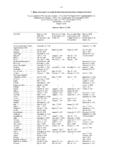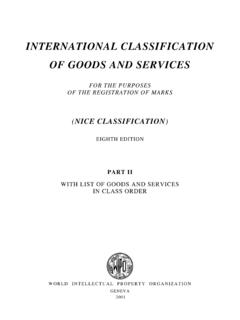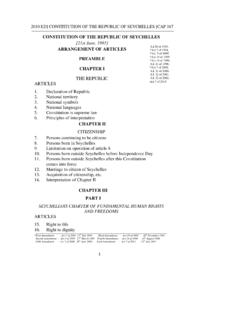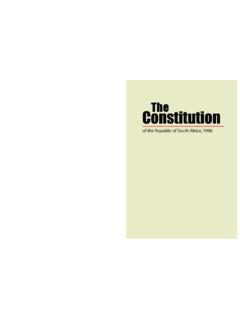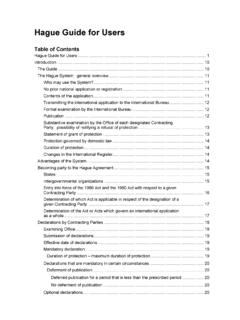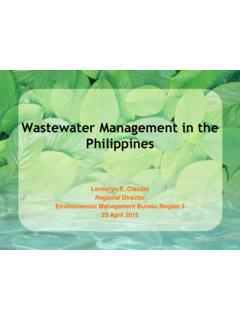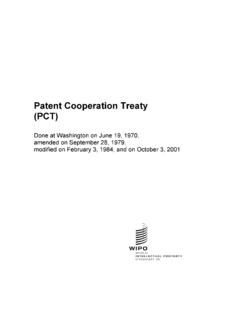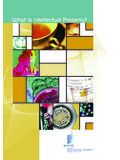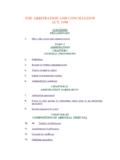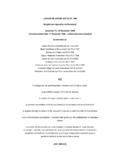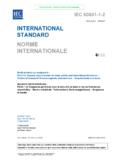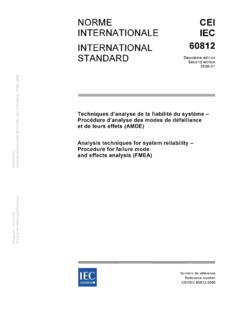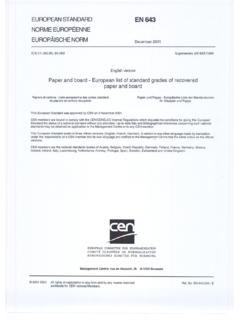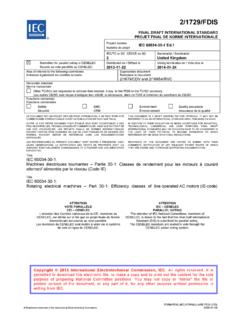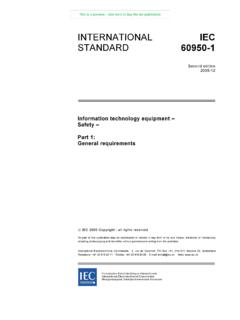Transcription of ST.25 - Standard for the presentation of nucleotide …
1 HANDBOOK ON INDUSTRIAL PROPERTY INFORMATION AND DOCUMENTATION Ref.: standards page: en / 03-25-01 Date: December 2009 Standard Standard FOR THE presentation OF nucleotide AND amino ACID SEQUENCE LISTINGS IN PATENT APPLICATIONS Revision adopted by the SCIT standards and Documentation Working Group at its eleventh session on October 30, 2009 It is recommended that Offices apply the provisions of the Standard for the presentation of nucleotide and amino Acid Sequence Listings in international Patent Applications Under the Patent Cooperation Treaty (PCT) as set out in Annex C to the Administrative Instructions under the PCT, mutatis mutandis, to all patent applications other than the PCT international applications, noting that certain provisions specific to PCT procedures and requirements may not be applicable to patent applications other than PCT international applications(*).
2 The text of that PCT Standard is reproduced on the following pages. (*) If, on July 1, 2009, the national law and practice applicable by an Office is not compatible with the provisions of paragraph 3(i) of the Standard for the presentation of nucleotide and amino Acid Sequence Listings in international Patent Applications Under the Patent Cooperation Treaty (PCT) requiring that a sequence listing which is contained in the international application as filed shall be presented as a separate part of the description, be placed at the end of the application, preferably be entitled Sequence Listing , begin on a new page and have independent page numbering , that Office may choose not to follow those provisions for as long as that incompatibility continues.
3 HANDBOOK ON INDUSTRIAL PROPERTY INFORMATION AND DOCUMENTATION Ref.: standards page: ANNEX C Standard FOR THE presentation OF nucleotide AND amino ACID SEQUENCE LISTINGS IN international PATENT APPLICATIONS UNDER THE PCT INTRODUCTION 1. This Standard has been elaborated so as to provide standardization of the presentation of nucleotide and amino acid sequence listings in international patent applications. The Standard is intended to allow the applicant to draw up a single sequence listing which is acceptable to all receiving Offices, international Searching and Preliminary Examining Authorities for the purposes of the international phase, and to all designated and elected Offices for the purposes of the national phase.
4 It is intended to enhance the accuracy and quality of presentations of nucleotide and amino acid sequences given in international applications, to make for easier presentation and dissemination of sequences for the benefit of applicants, the public and examiners, to facilitate searching of sequence data and to allow the exchange of sequence data in electronic form and the introduction of sequence data onto computerized databases. DEFINITIONS 2. For the purposes of this Standard : (i) the expression sequence listing means a nucleotide and/or amino acid sequence listing which gives a detailed disclosure of the nucleotide and/or amino acid sequences and other available information.
5 (i-bis) the expression sequence listing forming part of the international application means a sequence listing contained in the international application as filed (as referred to in paragraph 3) or a sequence listing included in the international application by way of a correction under Rule 26, a rectification under Rule 91 or an amendment under Article 34(2)(b) of the description in relation to sequences contained in the international application as filed (as referred to in paragraph 3bis); (i-ter) the expression sequence listing not forming part of the international application means a sequence listing which does not form part of the international application but is furnished for the purposes of the international search or international preliminary examination (as referred to in paragraphs 4 and 4bis); (ii) sequences which are included are any unbranched sequences of four or more amino acids or unbranched sequences of ten or more nucleotides.
6 Branched sequences, sequences with fewer than four specifically defined nucleotides or amino acids as well as sequences comprising nucleotides or amino acids other than those listed in Appendix 2, Tables 1, 2, 3 and 4, are specifically excluded from this definition; (iii) nucleotides embrace only those nucleotides that can be represented using the symbols set forth in Appendix 2, Table 1. Modifications, for example, methylated bases, may be described as set forth in Appendix 2, Table 2, but shall not be shown explicitly in the nucleotide sequence; (iv) amino acids are those L- amino acids commonly found in naturally occurring proteins and are listed in Appendix 2, Table 3. Those amino acid sequences containing at least one D- amino acid are not intended to be embraced by this definition.
7 Any amino acid sequence that contains post-translationally modified amino acids may be described as the amino acid sequence that is initially translated using the symbols shown in Appendix 2, Table 3, with the modified positions, for example, hydroxylations or glycosylations, being described as set forth in Appendix 2, Table 4, but these en / 03-25-01 Date: December 2009 HANDBOOK ON INDUSTRIAL PROPERTY INFORMATION AND DOCUMENTATION Ref.: standards page: en / 03-25-01 Date: December 2009 modifications shall not be shown explicitly in the amino acid sequence. Any peptide or protein that can be expressed as a sequence using the symbols in Appendix 2, Table 3, in conjunction with a description elsewhere to describe, for example, abnormal linkages, cross-links (for example, disulfide bridge) and end caps, non-peptidyl bonds, etc.
8 , is embraced by this definition; (v) sequence identifier is a unique integer that corresponds to the SEQ ID NO assigned to each sequence in the listing; (vi) numeric identifier is a three-digit number which represents a specific data element; (vii) language-neutral vocabulary is a controlled vocabulary used in the sequence listing that represents scientific terms as prescribed by sequence database providers (including scientific names, qualifiers and their controlled-vocabulary values, the symbols appearing in Appendix 2, Tables 1, 2, 3 and 4, and the feature keys appearing in Appendix 2, Tables 5 and 6); (viii) competent Authority is the international Searching Authority that is to carry out the international search and to establish the written opinion of the international Searching Authority on the international application, or the international Preliminary Examining Authority that is to carry out the international preliminary examination on the international application.
9 SEQUENCE LISTINGS Sequence Listing Forming Part of the international Application 3. A sequence listing which is contained in the international application as filed: (i) shall be presented as a separate part of the description, be placed at the end of the application, preferably be entitled Sequence Listing , begin on a new page and have independent page numbering34; preferably, the sequence listing shall not be reproduced in any other part of the application; subject to paragraph 36, it is unnecessary to describe the sequences elsewhere in the description; (ii) shall present the sequences represented in the sequence listing and other available information in the sequence listing in accordance with paragraphs 5 to 35.
10 (iii) if contained in an international application filed in electronic form, shall be in an electronic document format and filed by a means of transmittal in accordance with paragraph 37. 3bis. Any correction under Rule 26, rectification under Rule 91 or amendment under Article 34(2)(b) of the description submitted in relation to sequences contained in an international application filed in electronic form shall be submitted in the form of a sequence listing in electronic form comprising the entire listing with the relevant correction, rectification or amendment. Any such sequence listing: (i) shall preferably be entitled Sequence Listing Correction , Sequence Listing Rectification or Sequence Listing Amendment , as the case may be, and have independent page numbering34; (ii) shall present the sequences represented in the sequence listing and other available information in the sequence listing in accordance with paragraphs 5 to 35; where applicable, the original numbering of the sequences in the international application as filed (as referred to in paragraph 5) shall be maintained; otherwise, the sequences shall be numbered in accordance with paragraph 5.
